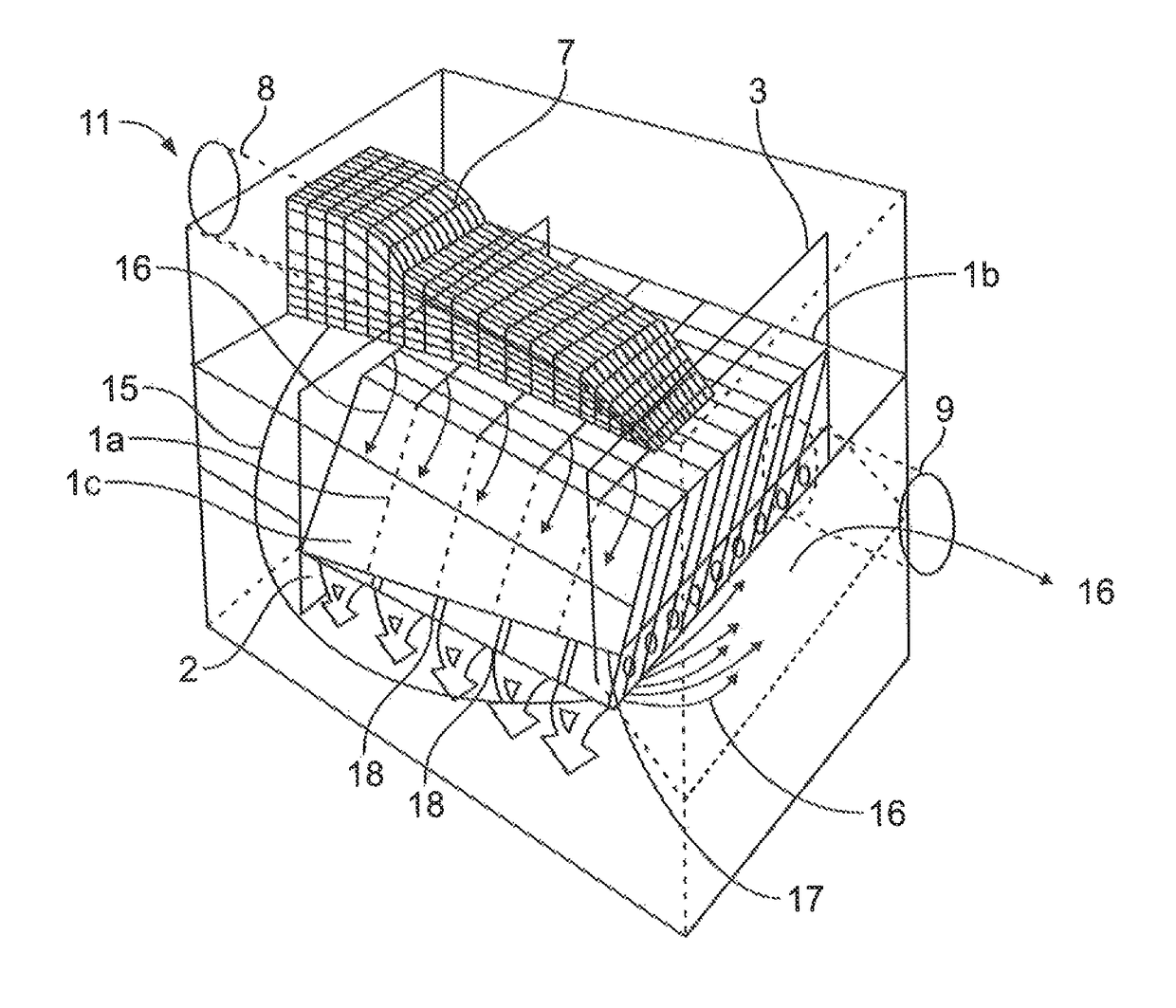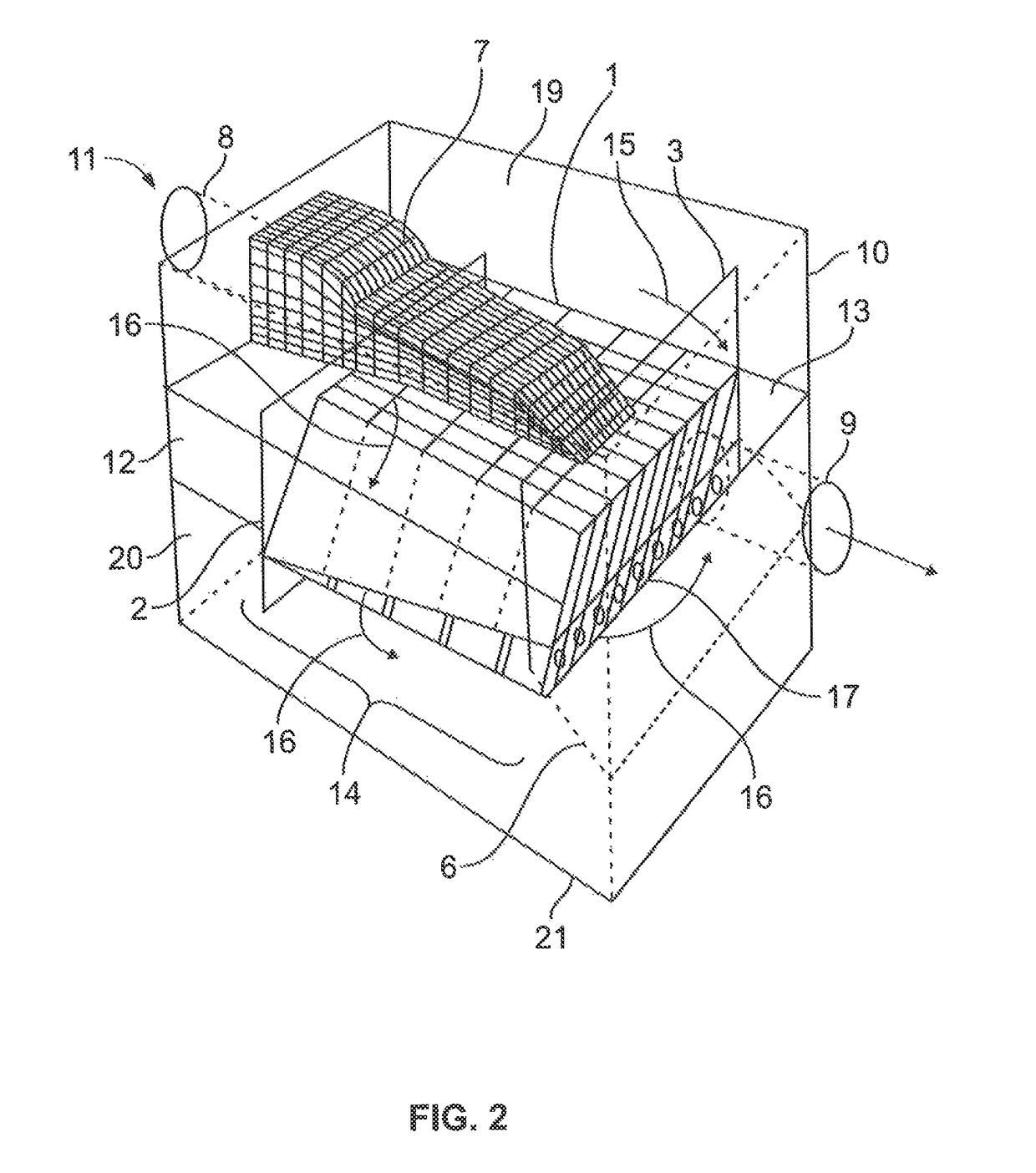Inclined plates for CSO
a technology of inclined plates and cso, which is applied in the direction of sedimentation settling tanks, sewage draining, separation processes, etc., can solve the problems affecting the construction cost of any site improvement, and achieve the effect of reducing cell length, increasing flow rate, and equal length to width ratio
- Summary
- Abstract
- Description
- Claims
- Application Information
AI Technical Summary
Benefits of technology
Problems solved by technology
Method used
Image
Examples
Embodiment Construction
[0048]While this invention is susceptible of embodiments in many different shape and size, the present invention is shown and described in the attached drawings.
[0049]The purification goal of the inclined cells is to remove as much sediment by means of exposure of the flowing water to settling area provided by the cells. This creates a condition where the relative movement of the settling particle and the encapsulating water separate. The water and the particle move “En Masse” as a closed cell and only the density difference facilitates relocation of the particle within the cell. There must be equality of this condition throughout the inclined cell settling device to preserve the settling performance and repeatability of the performance. By maintaining a constant pressure head and placing orifices across the length of the hinged baffle and shaping matching the flow path length of all cells to its neighboring cells from the crest point of the dry-weather flow weir to the orifice, the...
PUM
| Property | Measurement | Unit |
|---|---|---|
| Reynolds number | aaaaa | aaaaa |
| Reynolds number | aaaaa | aaaaa |
| length | aaaaa | aaaaa |
Abstract
Description
Claims
Application Information
 Login to View More
Login to View More - Generate Ideas
- Intellectual Property
- Life Sciences
- Materials
- Tech Scout
- Unparalleled Data Quality
- Higher Quality Content
- 60% Fewer Hallucinations
Browse by: Latest US Patents, China's latest patents, Technical Efficacy Thesaurus, Application Domain, Technology Topic, Popular Technical Reports.
© 2025 PatSnap. All rights reserved.Legal|Privacy policy|Modern Slavery Act Transparency Statement|Sitemap|About US| Contact US: help@patsnap.com



